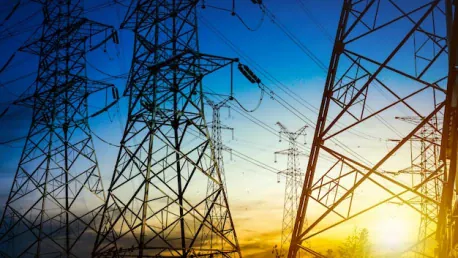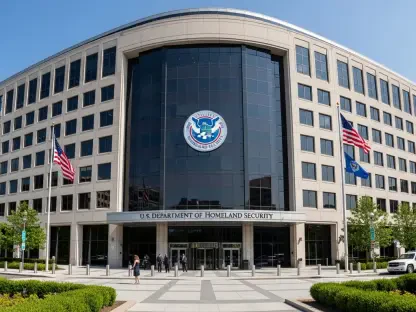As America strides forward into an era marked by technological advancement and environmental awareness, the energy sector sits at a pivotal crossroads. The burgeoning demand for electricity, driven by the proliferation of electric vehicles, data centers, and the move towards net-zero emissions, has spotlighted the readiness of existing infrastructure. The American Society of Civil Engineers (ASCE) Infrastructure Report for this year paints a mixed picture of progress and challenges in the energy sector. The critical need to modernize, expand, and fortify the energy grid against climate impacts and increasing demand is more pressing than ever.
Challenges in Existing Infrastructure
In the latest ASCE report, the energy sector is rated a D+, highlighting significant vulnerabilities and the deteriorating state of various systems. This rating signals a decline from the prior assessment, underscoring the persistent challenges despite recent investments. Many energy systems are approaching or have already surpassed their intended service life, putting them at considerable risk of failure. These systems are not just aging but are also struggling to keep up with the rapidly growing electricity demand. By 2030, the expected additional electricity requirement is projected to reach 35 gigawatts, which is double the demand recorded in recent years. This surge necessitates a comprehensive overhaul and expansion of existing infrastructure to ensure reliable service delivery.
Moreover, the push towards achieving federal and state net-zero emissions targets adds another layer of complexity. Utilities are required to modernize the grid to accommodate renewable energy sources while enhancing the transmission and distribution networks. However, persistent underinvestment and the significant costs involved in these upgrades have hindered progress. As such, the energy sector’s vulnerabilities extend beyond aging infrastructure to encompass financial and regulatory challenges that must be addressed to meet future demands effectively.
Impact of Legislative Measures
The Infrastructure Investment and Jobs Act (IIJA) and the Inflation Reduction Act (IRA) have been instrumental in bolstering the energy sector’s resilience and modernization efforts. These legislative measures have provided substantial funding for grid modernization and the integration of renewable energy sources. Investments from these acts are paving the way for a transition towards a more sustainable and reliable energy future. Nevertheless, the report highlights that since the turn of the century, 80% of electricity outages have been weather-related. Of these outages, a majority transpired within the last decade, highlighting the escalating impact of climate change on the grid’s reliability.
Strengthening the distribution networks and enhancing interregional transmission connections are emphasized as critical measures to mitigate these weather-related disruptions. The need for a resilient grid that can withstand extreme weather events is paramount, especially in light of the 27 billion-dollar disasters reported last year alone. These events resulted in 568 fatalities and caused over $182 billion in damages. The ASCE report stresses that investments in resilient infrastructure are not just necessary for preventing outages but also for ensuring safety and saving communities from exorbitant post-disaster recovery costs. A $1 investment in resilience is estimated to save $13 in recovery, underscoring the cost-effectiveness of proactive measures.
Recommendations for Long-term Viability
To address the pressing needs of the energy sector, the ASCE report outlines several policy recommendations aimed at ensuring long-term viability and robustness. Key among these is the continuation of IIJA investment levels beyond 2026, providing a sustained source of funding for critical infrastructure projects. This long-term financial commitment is crucial to maintaining the momentum achieved through recent legislative measures. Additionally, utilities must ensure that their rates accurately reflect the true costs of maintenance and improvement, facilitating the necessary investments.
The expansion of public-private partnerships is also recommended to leverage additional resources and expertise in addressing infrastructure challenges. These partnerships can play a pivotal role in supplementing public funds and driving advancements in grid modernization and sustainability. Ensuring the long-term viability of funding mechanisms, such as the Highway Trust Fund, is another critical aspect. Stability in funding will allow for continuous improvements and the ability to adapt to evolving demands and climate conditions.
Incorporating life-cycle cost analysis in planning processes is highlighted as essential for making informed decisions regarding infrastructure investments. This approach considers the total cost of ownership over an asset’s life, allowing for more strategic and economically sound investments. By focusing on long-term benefits and sustainability, policymakers and utility providers can make investment decisions that will yield significant returns and enhance the energy sector’s resilience.
The Path Forward
As America embarks on a new era defined by technological progress and heightened environmental awareness, the energy sector stands at a critical juncture. The rising demand for electricity, fueled by the widespread adoption of electric vehicles, the expansion of data centers, and the ambitious goal of achieving net-zero emissions, has highlighted the preparedness of our existing infrastructure. The latest Infrastructure Report from the American Society of Civil Engineers (ASCE) presents a mixed outlook for the energy sector, underscoring both advancements and ongoing challenges.
It emphasizes the urgent need to modernize, expand, and strengthen the energy grid to better withstand climate impacts and meet growing demands. Given these pressing issues, there’s a significant call to not only invest in but also innovate within our energy infrastructure. As the nation moves forward, a robust, resilient, and future-ready energy grid will be crucial for sustaining progress and meeting the ambitions of a cleaner, technologically advanced society.









